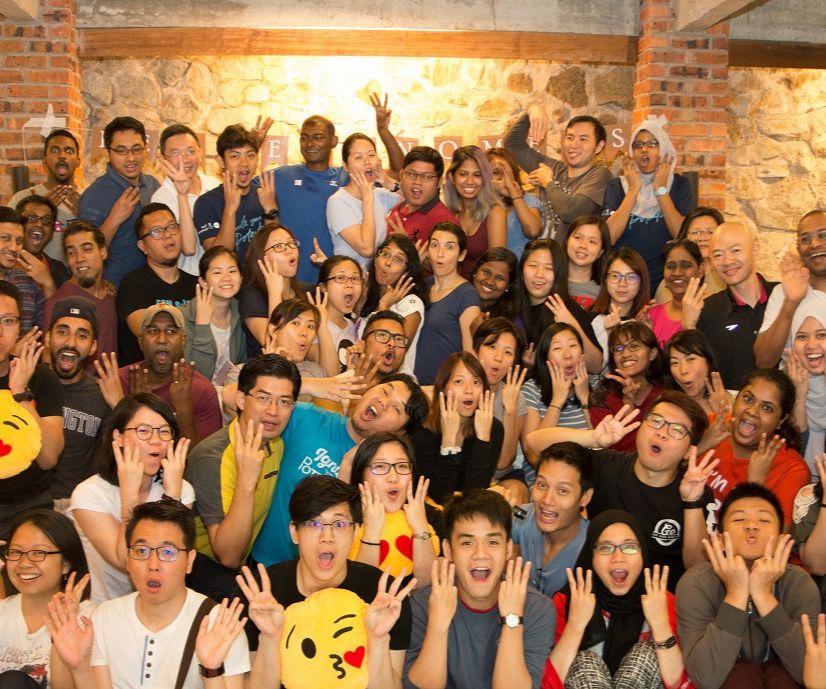Resetting Your Work-from-Home Routine

Vector image is from freepik.com by @pikisuperstar.
The reality has finally sunk in—work-from-home is here to stay. For some, like my company, we're in fully remote workplaces (and always have been). Some hybrid version (with days in the office and days at home or the coffee shop) is the new norm for most.
I have always loved the possibilities of working remotely, so much so that in 2019 I embarked on a year of working remotely and traveling around the world with my husband and three sons. (The first of the year was spectacular, with stops in the US, Europe, and Asia. The second half—plus a whole extra year added on—turned into a Covid pause in New Zealand and was also wonderful.)
This preamble means that I have a lot of experience with working from home and know how to set the stage for myself and my team (and our clients) to feel engaged, connected, and productive. But I also know it's not as stress-free and easy as it sounds. Sweatpants aren't a magical solution to the overall stress of work. Loneliness, isolation, distractions, and Zoom fatigue are real, and they are challenges to overcome.
As summer vacations end and we ramp up for the last quarter's urgency to accomplish big things, we must revisit our work-from-home habits. We must reset and actively design how we manage our time and focus and make space for our best work, which also means the time we're not working.
6 Habits for Successful Work-from-Home Routines
It's time to become more intentional about our work-from-home routines. And especially important is to deal with one of the most critical challenges: the sense that work never ends. If you haven't done this already, it's time to put an end to rolling out of bed and tapping away on the laptop. Senior executives included. We need boundaries—about when we work, when we're on call, how we communicate, and what work actually gets done. No one can do it all; that shouldn't be the default. (More on that below.)
Many work challenges preventing easy and effective practices are not location specific. Efficiency is portable. Individuals and teams that hone their skills at simple, clear communication and logical workflow bring those skills and filters home. Teams that do not have this clarity and restraint continue to suffer, and the cycle of exhausting work is amplified by the nervous, anxious climate around them.
In the best of all possible worlds, teams are location agnostic. They get past the Wild West mentality of work-from-home, where every team member customises their own approach to schedule, communication, and tactics. Instead, the most successful teams strive to create norms that unify behavior. They discuss things overtly, as opposed to wasting energy by guessing. They set protocol instead of improvising.
Rather than structure our days ad hoc and reactively by deciding what to do based on our email or that latest emergency, we can take control, get organised, accomplish more work, and do it better. And then have life at home and with friends that WFH promises.
Here are seven steps to help you set your habits and encourage larger conversations with your team and organisation.
1. LIMIT LOW-VALUE WORK AND DEVELOP YOUR "REDUCTIVE MINDSET"
Before your actual workday begins, let's start with the hardest but most fundamental habit that supersedes everything else. The biggest challenge starts and ends with all the garbage work that fills our day--the emails, meetings, decks, reports, protocols, and paperwork that drain everyone's critical capacity. And closely related is the fact that the default always seems to be to add on more to-dos without ever taking anything off.
Perhaps your team or company has tried to address this problem by reshuffling priorities, delegating, or simply putting things on the back burner. In our work with clients, I see that many companies will go in through the doorway of tactical changes and forget the behavioural. They do reorgs (thinking that putting people in new seats will change how they work). They do technology or classic process improvements (thinking LEAN or Six Sigma will fix things). Those steps are great, but we think of them as the "bricks," and they are forgetting the "mortar." The mortar is the glue--the human aspects of habit, culture, and philosophy.
To reverse the gears of accumulation and complication, we must learn instead to develop the habit of a Reductive Mindset. That is, "reductive" in the mathematical sense—"to reduce the amount of"--where it becomes second nature to eliminate unnecessary things. We want to celebrate less—less complexity, less on our to-do lists, less waste, less interrupting, less unnecessary touch points, and Zoom meetings.
Developing a Reductive Mindset means you adopt a habit--a reflex, tendency, effortless first inclination--to surrender, reduce, forgo, renounce, skip, eliminate, or cut the unnecessary. All of us must work to dismantle the additive instincts most companies and professionals have developed. If valuableness can replace quantity in our goals, we can rewrite these fundamental beliefs.
You can add the Reductive Mindset to your own sphere or work, and you can use this as a conversation with your colleagues and direct reports.
2. DEFINE YOUR WORKSPACE: Use Visual Cues
With that big picture out of the way, start your day by creating a work environment that serves as a visual cue. That can be a home office with a few nice touches, or, if you must utilise more than one workspace in your home, establish the same environment in each location every day. Whatever is on your desk— drinks, paper, pad, inspirational quotes, photos—create a comfortable environment and repeat it each time you move. Doing so tells your brain that work is "on." The visual cue of returning to the same orchestrated workspace over and over will give you a sense of power.
3. SET CLEAR INTENTIONS FOR THE DAY: Use a Paper Anchor
The habit of a "paper anchor" will give you an enormous sense of confidence in your workflow. A paper anchor is a piece of paper, a pad, or a stickie note on one side of your computer. On it are three, five, or seven of the most critical tasks you want to focus on that day. Using paper, which is intellectually uncomplicated and easy to interact with, will direct you forward more easily than the noisy chorus of tech-based checklists and platforms. Having the paper next to you is like having the kindest boss you've ever had. It gently and repeatedly directs you to use your time for what's most important.
4. TAKE EFFECTIVE BREAKS: Use the "Wedge"
Many advisers say you should take breaks, but that is an awfully broad statement, and the advice can be confusing. The Energy Project tells you to follow your body's Circadian rhythm and take a break every ninety minutes. The Pomodoro Technique suggests taking a break every twenty-one minutes. But timed breaks don't always fit well with your work. A more intuitive model suggests paying attention to your individual internal cues. When you feel like you're drowning in calls, when you tingle from adrenalin, or when your body is craving sugar or email or caffeine or any of the compensatory techniques for rest, insert a wedge of space, what we call a "strategic pause" and insert it into your day.
Read more: Why Taking Time Off Is Good for Your Brain
5. SCHEDULE EMAIL: Use Intervals to Batch Your Email Checks
The system of clear intentions and intuitive breaks described above falls apart unless you maintain a gentle schedule for checking email. If the gateway to email is open all day long, we end up checking, checking, checking, checking, and checking. The organisational boosts of the paper anchor and the strategic breaks are nullified by that addictive habit. The most productive people decide when they will indulge and when they will abstain from email. You can check at the top of every hour, for instance, or at the top and bottom of every hour. Some people check at mealtimes. Such a purposeful, periodic schedule creates vacuums between email checks into which your truly deep work can flow. You can share your plan with your teammates, which is a best practice wherever you work. More clarity means a better connection.
Discover: An Email Nuance Not to Miss: Checking vs Processing
6. FIND CLOSURE: Use a Check-Out Ritual
Many of these techniques centre on compartmentalisation, a vital habit of work-from-home professionals. Anytime you can put something in a box, literally or figuratively, it helps you focus. Email checking is compartmentalisation. The paper anchor is compartmentalisation. That same idea can be applied to end your day.
- First, end your day by closing down your visual cues. For example, you can open a literal compartment, such as a drawer or a cabinet, and place all your work-related items inside. Tuck them in and let them slumber while you do.
- Second, trap yourself in a promise: It's not easy to clock out in a virtual world where we can be—and sometimes feel we should be—constantly available. A wonderful technique to cut ties with work for the evening is to trap yourself in a verbal promise that you say out loud to someone in your environment. When you want work to be over, stand in front of friends or children or loved ones, or a roommate and say, "I'm finished working for the day." If you live alone, you can call/text a boundary buddy and say the same thing or simply say it for your own ears to hear.
These simple habits can start solo and are ideally shared in teams. (And, of course, it's wonderful when these habits start—and are practiced—from the top of the leadership chart.) The best work-from-home and hybrid teams nimbly balance the personal connection with tactical oversight. They create expectations around results (output, sales, projects completed) rather than availability (continuous time spent at a workstation.) There's a back-and-forth and ongoing process to listen, reflect, learn, and change. Leaders provide development opportunities as a constant message of support and connection.
The best teams and individuals also maintain a sense of realism. They recognise that work-from-home (including hybrid arrangements) is a constant balancing of gratitude and acceptance of the pros and cons. They celebrate autonomy and freedom, and they appropriately accept social limitations. They develop themselves, ask for help, and put work away so they can recharge and be their best selves.
This article was also published on Juliet Funt's LinkedIn.
This article is also available in Chinese.
Edited by: Kiran Tuljaram
Functional





